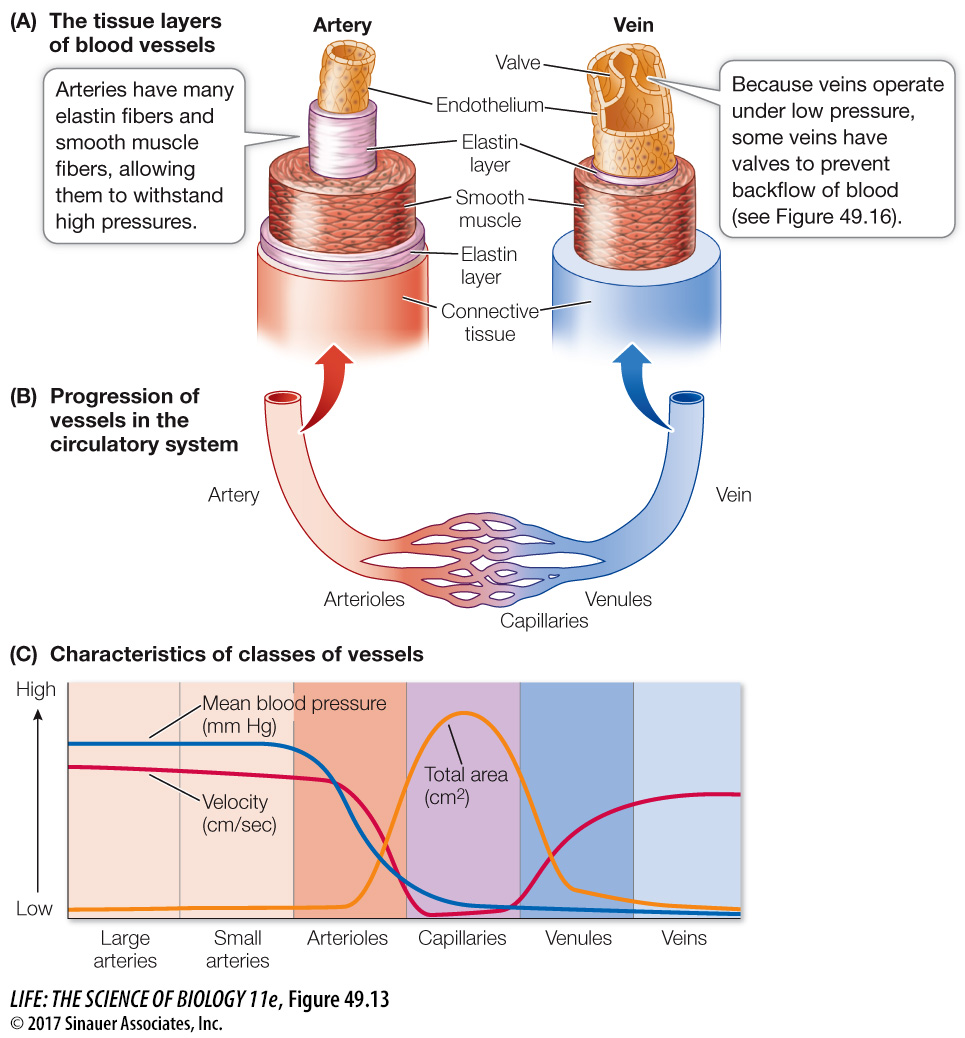Arteries withstand high pressure, arterioles control blood flow
The walls of the large arteries have many extracellular collagen and elastin fibers that enable them to withstand the high blood pressures generated by the heart (Figure 49.13A). These elastic tissues have another important function: as you saw with the bulbus arteriosus in fish, they are stretched during systole, and thereby store some of the energy imparted to the blood by the heart. Elastic recoil during diastole returns this energy to the blood by squeezing it and pushing it forward. As a result, even though pressure in the arteries pulsates with the beating of the heart, the flow of blood is smoother than it would be through a system of rigid pipes.

Activity 49.3 Structure of Blood Vessels
Contraction of smooth muscle cells in the walls of the arteries constricts the vessels, and relaxation of the smooth muscle dilates them. When the diameter of a vessel changes, its resistance to blood flow changes, and the amount of blood flowing through it changes as a result. Neural and hormonal mechanisms act on smooth muscle cells in the walls of the arteries and arterioles, controlling the flow of blood through these vessels. The arterioles are referred to as resistance vessels because their resistance can vary to control the blood flow to specific tissues.